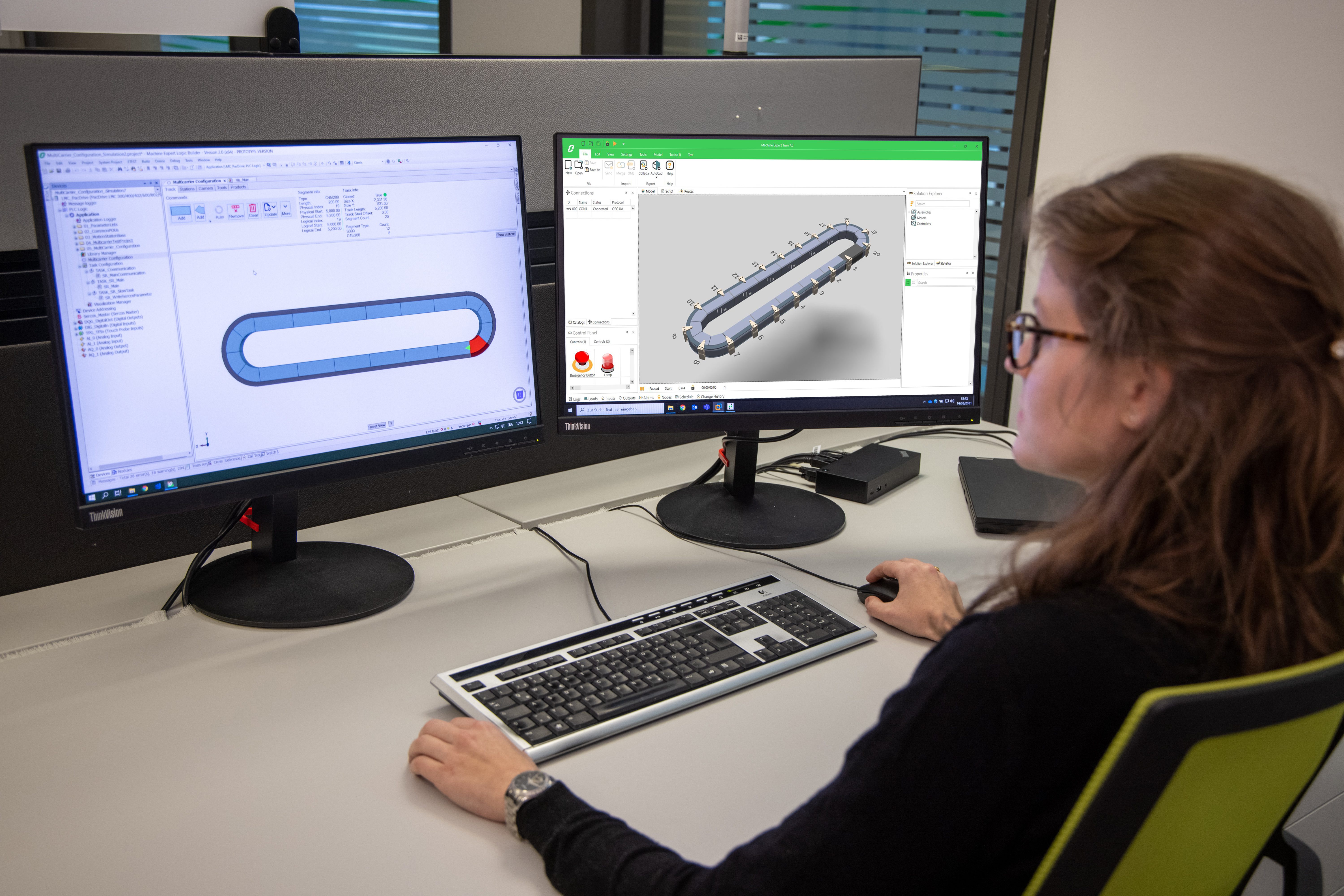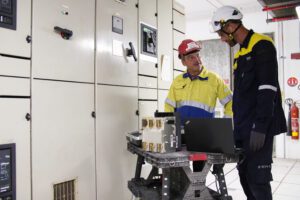
In today’s volatile world, where marketplace conditions rapidly shift, manufacturers must rely on flexible machines to quickly adjust to consumer and environmental-driven changes. To keep up, OEMs who furnish the manufacturing industries with state-of-the-art machines are tasked with reinventing the way they design and build their machines. Fortunately, OEMs now have access to new-generation design technologies such as digital twins and multi carrier systems that introduce new virtual simulation and modularity levels. New machine design methodologies are now emerging that allow OEMs to design machines that significantly boost production flexibility at end-user plant sites.
Such innovation is particularly beneficial across packaging and assembly processes. New-generation carrier transport solutions eliminate complex mechanical and electrical installation challenges, laborious carrier mounting and demounting procedures, and assembly-line product positioning accuracy limitations.
As industrial end users focus on speed, reliability, efficiency, flexibility, and lifetime costs, successful OEMs address these requirements through a more modern design logic that prioritizes flexibility and agility. The more efficient design tools help OEMs better address end user business challenges while reducing machine delivery time-to-market. New machine designs also allow manufacturers more flexibility in their use of raw materials, their diversity of product sizes and shapes, and their ability to engineer quicker changeovers with faster and more serviceable machines.
Two game-changing technologies ̶ multi carrier and digital twin ̶ are now combining to redefine how OEMs design machines and how end users implement them. For the OEM, it’s all about differentiation, and those who offer faster, more flexible, and sustainable machines will emerge as marketplace winners.
Flexibility through a modular, scalable multi carrier
New multi carrier machines drastically reduce the number of components within the machine design. The Lexium MC12 multi carrier system, for example, operates from a design principle where less is more and achieves the design simplicity goal in five ways:
- Carrier track segments consist of only two configurations: straight and 45° Each of these modular carrier segments house coils that can be energized. As the coils are energized, a magnetic field controls the carrier movements along the track. The carrier follows the moving magnetic field with its embedded permanent magnet, which is engaged along the track (Watch this two-minute demo).
- Compared to the large traditional chains used to drag along products, this modern approach dramatically reduces the number of component movements required to run the machine.
- Since products can be handled individually, fewer loads need to be moved around, which means less displacement of overall mass and weight. This produces less friction and reduces stress on moving parts.
- Reusing an existing design to accelerate new system development is straightforward because the system is modular, and the design is captured digitally. This makes it easy to adapt to new configurations by simply adding modular segments or carriers and adjusting the existing design to new customer requirements.
- Next-generation multi carrier product transport systems also come equipped with advanced diagnostics. The machine can be accessed remotely, and the maintenance technician can view all components and quickly detect any deviations from normal operational parameters. Thus, by identifying early anomalies, maintenance can be scheduled during service periods, and instances of unanticipated downtime are avoided. When maintenance work is performed, the hardware is designed to accommodate a quick replacement of carriers and easily replace modular segments.
Rapid development speed through digital twin simulation
For OEMs, the flexibility needed to speed up the machine selling and design processes comes from their ability to virtually assemble the machine components using software tools such as digital twins. The EcoStruxure Machine Expert Twin software with the Lexium MC12 multi carrier system enables engineers to determine machine performance and flexibility before the machine is ever built. Engineers can use this digital platform to run different formats and to see how those formats impact machine behavior. Using the digital twin to click together a track and add several carriers and processing stations, testing can begin immediately to see if the machine fulfills the application’s needs.
As the optimum design is derived, concurrent programming and optimization take place. During production (when the actual machine is on the floor), changeovers can either be executed through the touch of a button or can occur automatically, whichever the user deems to be the most practical approach.
Additional benefits include optimized footprint and increased OEE
Manufacturers who have installed new-generation multi carrier units have doubled their performance, reduced their footprints by half, and enjoy the benefits of a machine delivered within a short lead-time tailored to their production process. In addition, a multi carrier system can take over functionalities usually performed by specialized equipment, simplifying the overall machine by reducing mechanical complexity.
For OEMs, the Lexium MC12 multi carrier coupled with EcoStruxure Machine Expert Twin software opens the door to differentiated, high-speed machine designs (with design quality improvements of up to 30%), a 20-40% savings in investment costs (thanks to optimized machine footprints), less unscheduled machine downtime, and a 50% improvement in overall equipment effectiveness (OEE) over time.
For more information
Curious about use cases for Lexium MC12 multi carrier transport solution? Get a closer look and give it a try yourself with this interactive demonstration.
Watch our webinar to learn more about how Schneider Electric’s Lexium MC12 multi carrier and digital twin technologies address modern machine design requirements.



